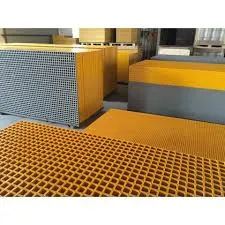
-
 Afrikaans
Afrikaans -
 Albanian
Albanian -
 Amharic
Amharic -
 Arabic
Arabic -
 Armenian
Armenian -
 Azerbaijani
Azerbaijani -
 Basque
Basque -
 Belarusian
Belarusian -
 Bengali
Bengali -
 Bosnian
Bosnian -
 Bulgarian
Bulgarian -
 Catalan
Catalan -
 Cebuano
Cebuano -
 China
China -
 China (Taiwan)
China (Taiwan) -
 Corsican
Corsican -
 Croatian
Croatian -
 Czech
Czech -
 Danish
Danish -
 Dutch
Dutch -
 English
English -
 Esperanto
Esperanto -
 Estonian
Estonian -
 Finnish
Finnish -
 French
French -
 Frisian
Frisian -
 Galician
Galician -
 Georgian
Georgian -
 German
German -
 Greek
Greek -
 Gujarati
Gujarati -
 Haitian Creole
Haitian Creole -
 hausa
hausa -
 hawaiian
hawaiian -
 Hebrew
Hebrew -
 Hindi
Hindi -
 Miao
Miao -
 Hungarian
Hungarian -
 Icelandic
Icelandic -
 igbo
igbo -
 Indonesian
Indonesian -
 irish
irish -
 Italian
Italian -
 Japanese
Japanese -
 Javanese
Javanese -
 Kannada
Kannada -
 kazakh
kazakh -
 Khmer
Khmer -
 Rwandese
Rwandese -
 Korean
Korean -
 Kurdish
Kurdish -
 Kyrgyz
Kyrgyz -
 Lao
Lao -
 Latin
Latin -
 Latvian
Latvian -
 Lithuanian
Lithuanian -
 Luxembourgish
Luxembourgish -
 Macedonian
Macedonian -
 Malgashi
Malgashi -
 Malay
Malay -
 Malayalam
Malayalam -
 Maltese
Maltese -
 Maori
Maori -
 Marathi
Marathi -
 Mongolian
Mongolian -
 Myanmar
Myanmar -
 Nepali
Nepali -
 Norwegian
Norwegian -
 Norwegian
Norwegian -
 Occitan
Occitan -
 Pashto
Pashto -
 Persian
Persian -
 Polish
Polish -
 Portuguese
Portuguese -
 Punjabi
Punjabi -
 Romanian
Romanian -
 Russian
Russian -
 Samoan
Samoan -
 Scottish Gaelic
Scottish Gaelic -
 Serbian
Serbian -
 Sesotho
Sesotho -
 Shona
Shona -
 Sindhi
Sindhi -
 Sinhala
Sinhala -
 Slovak
Slovak -
 Slovenian
Slovenian -
 Somali
Somali -
 Spanish
Spanish -
 Sundanese
Sundanese -
 Swahili
Swahili -
 Swedish
Swedish -
 Tagalog
Tagalog -
 Tajik
Tajik -
 Tamil
Tamil -
 Tatar
Tatar -
 Telugu
Telugu -
 Thai
Thai -
 Turkish
Turkish -
 Turkmen
Turkmen -
 Ukrainian
Ukrainian -
 Urdu
Urdu -
 Uighur
Uighur -
 Uzbek
Uzbek -
 Vietnamese
Vietnamese -
 Welsh
Welsh -
 Bantu
Bantu -
 Yiddish
Yiddish -
 Yoruba
Yoruba -
 Zulu
Zulu
frp field tank
Understanding FRP Field Tanks A Comprehensive Overview
In recent years, the demand for efficient and sustainable storage solutions has surged, leading to the increasing popularity of Fiber Reinforced Polymer (FRP) field tanks. These tanks, which are composed of a resin matrix reinforced with fibers, typically glass or carbon, offer a variety of advantages that make them ideal for a wide range of applications in industries such as agriculture, oil and gas, water treatment, and chemical storage.
The Composition of FRP Field Tanks
FRP field tanks are made from a composite material, which generally consists of a plastic resin combined with reinforcing fibers. This innovative construction provides a balance of flexibility and strength, resulting in a lightweight yet durable product. The primary components of FRP include
1. Resin Commonly, polyester or vinyl ester resins are used. These materials provide excellent corrosion resistance and can endure harsh environmental conditions. 2. Reinforcement Fibers Glass fibers are most frequently used due to their high tensile strength and resistance to thermal degradation. In specific applications, carbon fibers may be utilized for their superior strength-to-weight ratio.
3. Additives Various additives can be incorporated to enhance UV resistance, fire retardance, or to impart specific properties tailored to the requirements of the intended application.
Advantages of FRP Field Tanks
FRP field tanks present numerous benefits over traditional storage options like steel or concrete tanks
. These advantages include1. Corrosion Resistance One of the standout features of FRP is its resistance to corrosion. Unlike metal tanks, which can rust and degrade over time, FRP tanks maintain their structural integrity even when exposed to aggressive chemicals or salty environments.
2. Lightweight Design The lightweight nature of FRP makes it easier to transport and install. This characteristic significantly reduces installation costs and labor when compared to heavier materials.
3. Customizability FRP tanks can be manufactured in various shapes, sizes, and configurations, allowing for tailored solutions that meet specific operational needs.
4. Thermal Insulation The composite nature of FRP provides excellent thermal insulation, an essential attribute for industries storing temperature-sensitive materials.
frp field tank

5. Longevity With proper maintenance, FRP tanks can have an extended service life, often exceeding 30 years. This durability translates into lower replacement costs over time.
Applications of FRP Field Tanks
FRP field tanks are versatile and can be employed in numerous fields
1. Water and Wastewater Treatment These tanks are ideal for storing treated water, chemicals, and sludge due to their resistance to corrosion and leaks.
2. Oil and Gas Industries The tanks are used for storing hydrocarbons and chemicals, where their ability to withstand harsh environments is particularly beneficial.
3. Agriculture FRP tanks are commonly used for the storage of fertilizers, pesticides, and water, providing a safe option that reduces the risk of contamination.
4. Chemical Storage The resistance to corrosive materials makes them suitable for the containment of various chemicals used in manufacturing processes.
Environmental Impact
Beyond their practical benefits, FRP field tanks also contribute positively to environmental sustainability. Their durable design reduces the need for frequent replacements, while the materials used in their construction can often be recycled. Furthermore, by effectively storing hazardous materials, they help minimize environmental risks associated with leaks and spills.
Conclusion
As industries continue to evolve and the demand for safe, reliable storage solutions grows, FRP field tanks stand out as a formidable option. With their myriad advantages—from corrosion resistance to lightweight design—they provide practical benefits that can lead to long-term financial savings and improved operational efficiency. As we move towards a more sustainable future, the role of innovative storage solutions like FRP tanks will undoubtedly become increasingly significant, making them a wise choice for various applications. Their ability to adapt to diverse requirements and environments positions them at the forefront of modern storage technology.









